Canelo Álvarez, without a doubt, is the biggest name in boxing. He is considered to be one of the greats boxing. He has achieved more than others could have dreamed, he is a four time division champion and is looking for a fifth division belt. He is in discussion with Billy Joe Sounders for the super middleweight bout where Canelo is going for the World Boxing Association (WBA) title which he previously won from Rocky Fieldings by a vicious knockout victory and later on vacated the title to avoid the mandatory defense. Now, this vacant title would be inline if this fight takes place.
Tag: boxing
A Fighter’s Guide to Nutrition and Diet
Movies, TV, and countless training montages have taught us that a fighter’s diet needs to be highly specialized to be effective.

In reality, a fighter’s nutrition plan has a lot in common with your basic “sensible diet”. It only varies in how much you eat and how often.
In this blog, we lay out our guide for a proper fighter’s diet. This will help you to not only get through your training, but get the most from it.
Continue reading “A Fighter’s Guide to Nutrition and Diet”Focus on Fighting Styles, Part 2 – The Out-Boxer
The Out-Boxer fighting style can be a true wonder to behold.
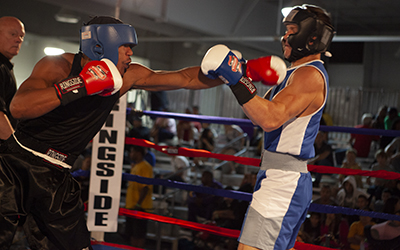
A master of this style uses pinpoint jabs to keep their opponent at bay, while slipping, ducking, and stepping out of the way of all incoming punches. It is graceful and highly technical.
But not just anyone can utilize this style effectively in the ring.
In our latest Focus on Fighting Styles, we will look more closely at the Out-Boxer style of fighting.
Continue reading “Focus on Fighting Styles, Part 2 – The Out-Boxer”Shadowboxing Fundamentals – 6 Tips for Improving your Training
For new fighters, shadowboxing looks kind of silly. You don’t hit anything, you make weird sounds, and you seem to be bouncing around at random. 
But if they really paid attention to a fighter who takes shadowboxing seriously, they’d see a fighter that is focused. They’d see a fighter that moves with purpose and precision. They’d see a fighter honing their technique like a pro.
Shadowboxing forms one of the foundations of boxing training. Everything you want to do in the ring, you’ll perfect, by yourself, punching the air. Continue reading “Shadowboxing Fundamentals – 6 Tips for Improving your Training”
Bagwork Fundamentals – 6 Important Tips when Hitting the Bag
We asked our friends at FighterCulture.com to write up their thoughts on some of the fundamentals of bagwork for us. This is a pretty good outline on some of the key concepts to making sure you’re getting the most out of your Heavy Bag work.
Hitting the heavy bag, commonly referred to as bagwork, is one of the most essential drills in combat sports like boxing, Muay Thai, or MMA. However, using the punching bag properly is a skill on its own.
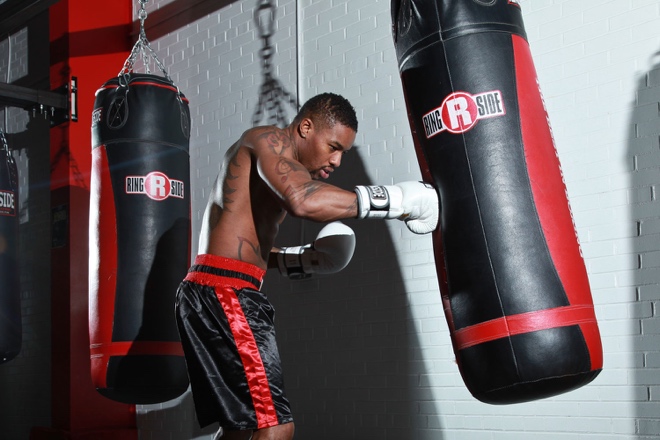
In this article, we are going to talk about bagwork fundamentals and will give you some tips on how to utilize the punching bag the best way possible. Continue reading “Bagwork Fundamentals – 6 Important Tips when Hitting the Bag”
Interval Training for Boxing and MMA
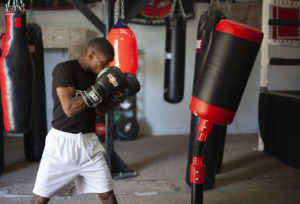
High intensity interval training (also known as HIIT) is perfect for boxers, MMA fighters, and other fight sport athletes.
Interval training can help fighters increase power and improve endurance. In addition, HIIT routines mirror the pace of a typical bout by incorporating multiple intensity levels over the course of the workout.
For fighters looking to give themselves an edge over their opponents, or just a way to add some variety to their training routines, consider HIIT and other interval training options. Continue reading “Interval Training for Boxing and MMA”
Boxing Drills: Agility Training for Boxing Footwork
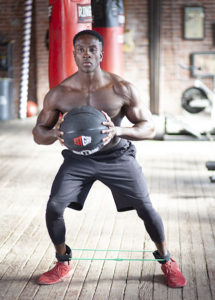
A lot of boxing training is oriented on what’s in front of you. Running, jumping rope, shadow boxing, bagwork–all of it tends to focus primarily on linear movement forward and backward.
But when you’re in the ring, you don’t just move up and back, you step in all directions. And that’s where agility training for boxing comes in.
Agility training teaches your feet to step quickly and smoothly out to the side, without losing your balance. It also builds up the muscles that support these movements to reduce the risk of injury.
If you want to be able to slip and slide in all directions around the ring, then you need to incorporate some form of agility training into your routine. Continue reading “Boxing Drills: Agility Training for Boxing Footwork”
Find the Right Boxing Coach for your Skill Level and Goals
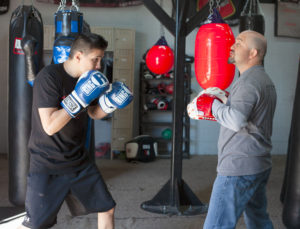
Top athletes have a combination of talent and inner drive that goes a long way toward making them great. Without some inherent talent and the discipline and determination to work on your craft, it’s next to impossible to become your best self and beat out the competition. At certain points, though, you need some help, and that’s where a coach comes in.
This is particularly true in boxing, a sport that demands peak physical fitness, refined technique, and lots and lots of toughness. Without a coach who knows what makes you tick, it’ll be easy to hit a wall. As you start your boxing training as a newbie or alter it to get to a new level, do yourself a favor and consult our tips for finding a boxing coach who suits your skill level and goals. Continue reading “Find the Right Boxing Coach for your Skill Level and Goals”
The Science Behind your Coach’s Training Regime
NOTE: This article was edited on 2/18/19 to include more information about Velocity Based Training (VBT) and common devices used to measure movement speed for use with VBT.
If you’ve been following this blog for a while then you know that boxing training constitutes more than just physical strength. We’ve discussed speed, movement, endurance, and mental preparation.
Now, we’re going to take a look at the science that supports the training that goes into boxing. If you understand the physical principles involved, then you will be able to better identify ways to maximize strength, speed, and your overall boxing prowess every time you put on your headgear and step into the ring.
 Continue reading “The Science Behind your Coach’s Training Regime”
Continue reading “The Science Behind your Coach’s Training Regime”
Why Hand Wraps Are Crucial for Boxers
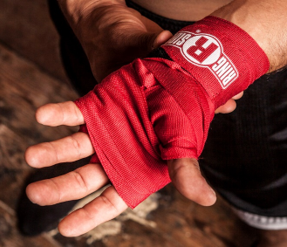
Boxers cannot afford to train or compete without quality boxing gloves or hand wraps. In boxing, your hands will endure repeated impacts with other objects (heavy bags and opponents being the most common). As you train, your skill level and technique will improve. With better technique your punching power will increase. Sounds great, right? But we have to remember two things — your hands! Generally, the stronger your punches become, the greater the risk of injuring your hands. Learning how to punch properly—including clenching your fists firmly on impact—can mitigate the risk to a certain extent. However, your hands are composed of flesh and bone and need to be protected from repetitive impacts. While boxing gloves are the most obvious method of protection, hand wraps are just as important. Let’s take a deeper look at why hand wraps are so important to boxers. Continue reading “Why Hand Wraps Are Crucial for Boxers”

